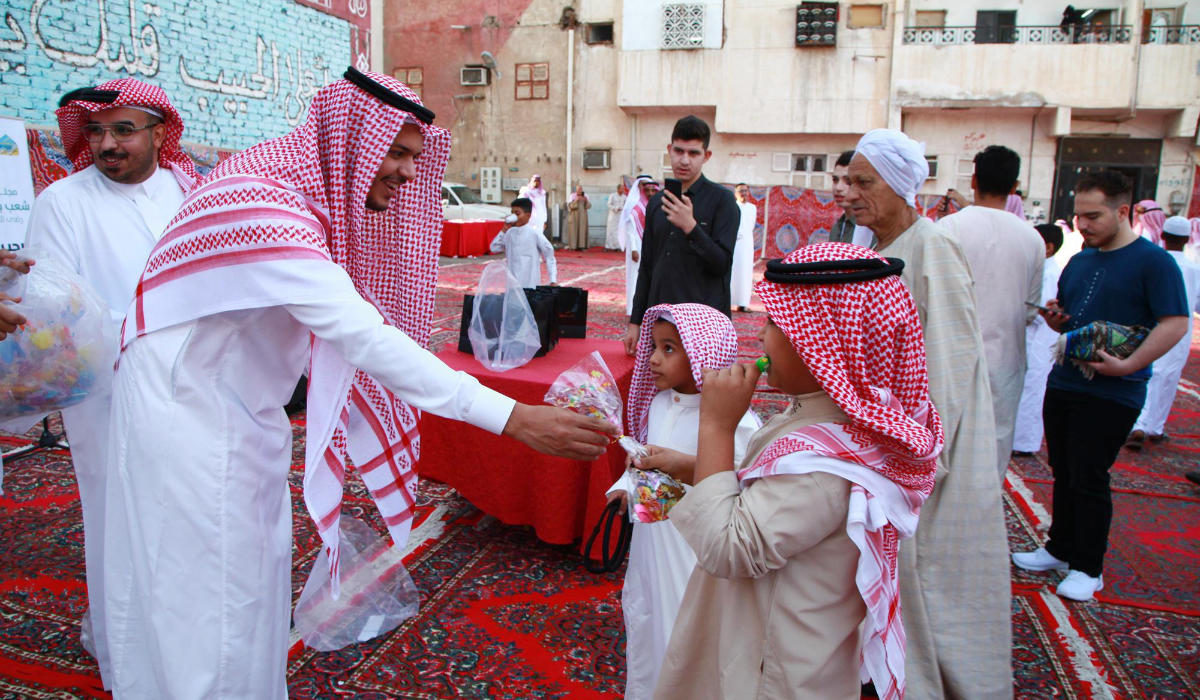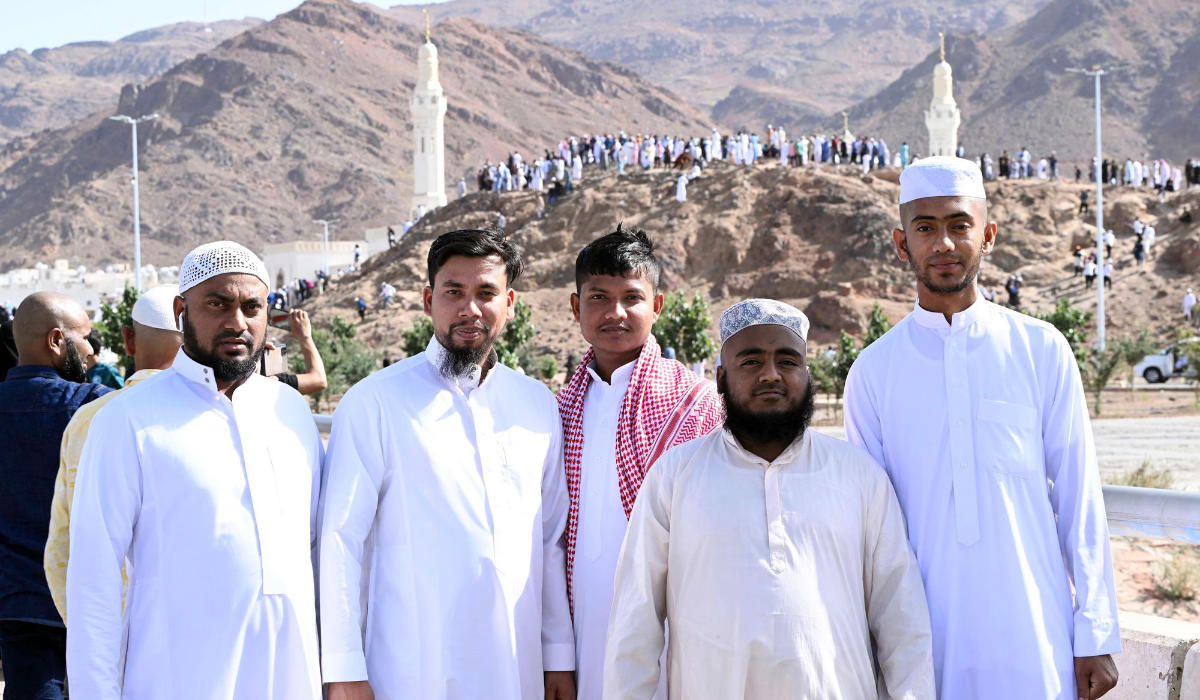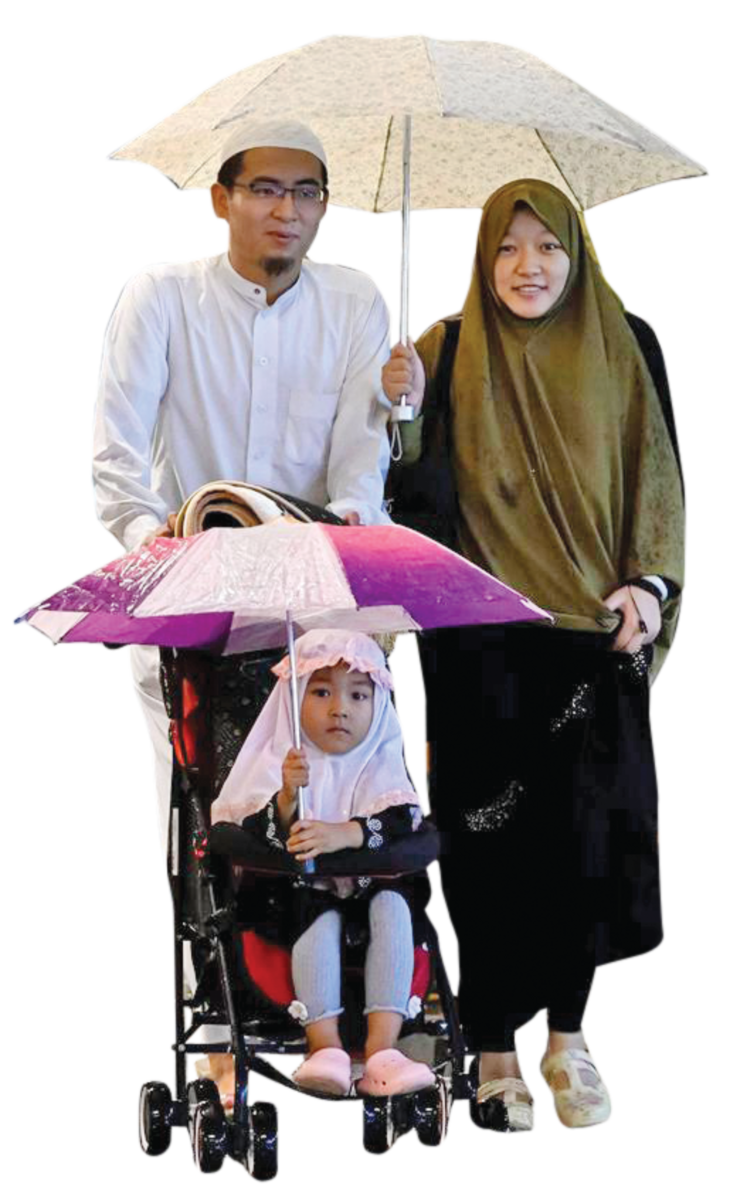MAKKAH: Many of the Umrah visitors in Makkah and Madinah during Eid Al-Fitr are keen to wear their countries’ traditional dress on the first day of the religious holiday, creating an integrated harmony of colors and a wonderful diversity.
Faten Hussein, a writer specializing in Hajj and Umrah, said: “People from all over the world come to Makkah to perform the fifth pillar of Islam, which is associated with circumambulating the Kaaba, traveling back and forth between Al-Safa and Al-Marwa, performing Hajj and other sacred rituals.”
“Thousands or even millions of Muslims come to Makkah and gather to become acquainted with a unique population that combines visitors from all over the world from Egypt, Iraq, Turkiye, Abyssinia, and from the lands of India to the lands of the Sindh, but also Southeast Asia and the East India, in addition to the population that has existed since the advent of Islam,” she said. “This formed a homogeneous society united by Islam and language, and this was strengthened by the presence of that society near the Grand Mosque.”

In Madinah, citizens and residents visited greeting sites in various neighborhoods to foster the spirit of community on the days of Eid. (SPA)
“The clothes worn during Eid by all nationalities around the world are an indication of the beautiful and positive diversity that exists only in the two holy capitals of Makkah and Madinah, as Muslims visit them from all countries. It is a beautiful and captivating sight that catches the eye during the first days of Eid.”
Hussein said that the diversity of apparel in Makkah on the days of Eid is the same as experiencing different cuisines. “Do not be surprised when you pass through the streets of Makkah to find restaurants with different foods and names. There are Bukhari rice restaurants that were very popular, Javanese food restaurants with the taste of satay, dan dan and its various combinations, Indian restaurants with a different taste of kabli, biryani and other dishes, Turkish restaurants, in addition to various Arab restaurants serving kibbeh, tabbouleh, baba ghanouj and other Levantine foods.”
HIGHLIGHT
Many pilgrims are seen wearing traditional Saudi outfits for Eid Al-Fitr, such as the thawb and ghutra for men and jalabiya for women, although they are not in the habit of wearing Saudi attire, but rather choose to partake in Saudi culture while visiting the Kingdom.
“Even on occasions and seasons such as Ramadan, you find that samosas and soups are the basis of Makkan meals, and let’s not forget the pitasa and shirk sweets. During the iftar of Eid, dibyaza, hareesa and mloukhia are served,” she said.

In Madinah, citizens and residents visited greeting sites in various neighborhoods to foster the spirit of community on the days of Eid. (SPA)
Reham Zahed, guest relations supervisor at one of the hotels in Makkah, said: “After raising the capacity to host the pilgrims, reaching 20 million pilgrims and worshipers for this year’s Ramadan season, and the increase in the percentage of operating hotels surrounding the Grand Mosque to accommodate this large number of visitors to the Sacred House of God, Makkah has become a city of diversity, where we find a cultural and civilizational carnival that brings together all civilizations and cultures from all continents.”
Zahed added: “The clothes represent these countries and peoples, and men also wear the official traditional apparel of their countries. We see them celebrating Eid Al-Fitr and their willingness to perform the Eid prayer in the Grand Mosque and in its squares, wearing their countries’ traditional attires in the most beautiful way, with a variety of eye-catching colors and designs, and everyone is overjoyed. Most of these guests stand out for wearing the official uniform of the Kingdom of Saudi Arabia, the white thobe and shemagh for men, and the abaya and veil for women.”

In Madinah, citizens and residents visited greeting sites in various neighborhoods to foster the spirit of community on the days of Eid. (SPA)
She said that seeing this great diversity in one country and one place brought joy, happiness and a sense of Islamic unity, as it was found only in the holy cities of Makkah and Madinah.
“Many male pilgrims are keen on wearing the traditional Saudi outfit for Eid Al-Fitr such as the thawb and ghutra, although they were not used to wearing such outfits before, which is beautiful,” she said. “There are also women who ask about the Hijazi traditional attire and wish to go visit specialized places to try it on. This is the beauty of Makkah’s diversity.”




























